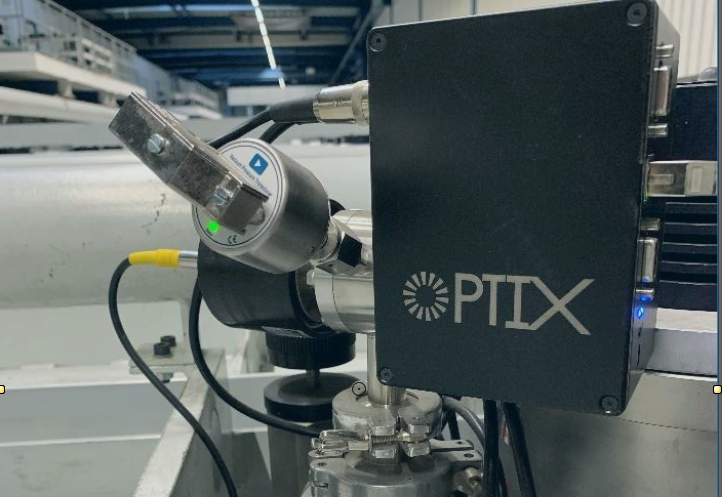Solutions for Large-Area-Coating
- Thomas Vartiainen
- Feb 14
- 4 min read
Updated: Jun 6
Large-area (LAC) coating technology is crucial in modern manufacturing. It enables the deposition of functional thin films across extensive surfaces. The technique has great advantages in terms of productivity. Still, the sheer size of machinery and substrates also leads to challenges that have to be (and luckily can) be tackled with modern process control.
Markets and areas
The global market for large-area coating is experiencing robust growth, driven by expanding applications in flexible electronics, decorative applications, or renewable energy.
The two main areas are:
1. Inline systems have a linear arrangement of chambers (load lock, pre-treatment, coating, cooling, unload) and an automated substrate transport between chambers, with separate vacuum conditions in each chamber.
They are standard t. ex. for coating (architectural) glass, steel or aluminum with substrate dimensions of up to 3x6 m.
2. Roll-to-roll coating (in short R2R): applying a thin material layer onto a continuously moving substrate, for
flexible materials like
Flexible plastics
Thin metal foils
Flexible electronics substrates
Polymer films
but also more solid like
metalstripes or even
flexible glas,
as long as they wind up from and onto a roll.
Common coating methods are
1. magnetron sputtering: For excellent film uniformity
2. electron beam evaporation: Allowing high deposition rates
Huge advantages ...
The technique has especially great advantages in terms of productivity = output in m2 per time unit with lower per-unit production costs.
Additional aspects:
Reduced processing time
Enables mass manufacturing of complex components
High coating conformity
Allows coating of temperature-sensitive substrates
Deposition methods: Both evaporation and sputtering are possible.
...come with challenges
The coating of large substrates is different to batch coating:
Inline-systems: Supervising and controlling the differing atmospheres in the different chambers (up to 20 or more in glass coaters).
R2R-coating: The continuous motion of potentially kilometers-long substrates through intricate deposition environments demands extraordinary precision and control.
More specifically, manufacturers must navigate critical issues such as:
Uniformity control: Ensuring consistent coating thickness across the entire substrate surface.
Adhesion: Achieving strong adhesion between the coating and the substrate, especially with flexible or polymer-based webs.
Substrate handling: Managing the temperature without damaging or distorting the substrate.
In-line monitoring: Implementing real-time in-situ quality control without interrupting the coating process.
Similar to other PVD applications: Cost-efficiency, demanding especially long production cycles/short service times.
SOLUTIONS
Modern plasma technology offers solutions to these challenges.
Upgrading from planar to rotatable targets
Benefits: Cost efficiency, process stability
Rotatable targets can play to their strength in high-volume areas, so R2R-coaters would be a predestined area for retrofitting if not yet done. A combination with an Active Anode (see next) can extend the benefits further.
Active Anodes
Benefits: For rotatable magnetron systems. Lower heat/lower stress, better process stability, reduced substrate damage. Especially benefitting: ITO- and/or web-coating processes.

Rotatable magnetron system with dual cathodes and Active Anode An active anode collects and channels electrons that have lost enough energy to escape the rotatable magnetron magnetic trap. Escaping electrons reduce the sputtering process and cause additional heating of the substrate.
An Active Anode solves these problems by directing the electron heating into the active anode. The substrate avoids any additional heating, less heat enables increased deposition rates.
You can read more about Active Anodes in our LinkedIn-Post.
In-situ plasma monitoring

In-situ-plasma-monitoring: Fast and robust Benefits: Detecting outgassing of substrates; identifying problems early before they affect the process and substrates.
In R2R-coating analyzing the vacuum environment is especially important as the continuous coating makes fast detection of problems even more important. Another factor is that substrates like flexible plastics have a higher risk of outgassing that has to be detected as early as possible in the process.
A very robust yet fast and precise solution for R2R-coaters is GENCOA's Optix, using remote-plasma emission monitoring. You can read what large-area-coating experts tell about Optix in a business case here in our blog.
Linear ion sources for material pre-treatment
Benefits: Quality enhancement
Ion sources work on two different principles. Their common working principle is that they ionize neutral atoms or molecules to create positively charged ions. Their main applications are to enhance surface reactivity and to clean the surface by removing organic contaminants.
You can read a detailed article about the technology and working principles in our blog.
For reactive processes: Reactive gas control
Benefits: High rates and good uniformity
Reactive sputtering enables advanced coatings for flat-panel displays,
(flexible) solar cells or decorative coatings. The challenge is that the reaction between reactive gas and the sputtered material causes process instabilities and reduced deposition rates (target poisoning).

A feedback controller will stabilize the process - allowing for a controlled and optimized process. The solution is to use a feedback control system that can very quickly adjust the reactive gas flow in response to the plasma conditions, in order to hold the process in high rate metallic or transition mode. A reactive gas controller as GENCOA’s Speedflo provides such an automatic feedback control and enables the PVD operator to control a reactive process in what would usually be an unstable region. The benefits can be as high as a times increased deposition rate
A detailed description of the physics behind reactive sputtering and the solution of reactive gas control can be found here in our blog section.
Outlook
Modern process devices can greatly enhance LAC processes and increase quality as well as lower production costs. For more information and demonstration possibilities please check our website or contact us at info@avaluxe.de.
Author: Thomas Vartiainen, tvartiainen@avaluxe.de




Comments